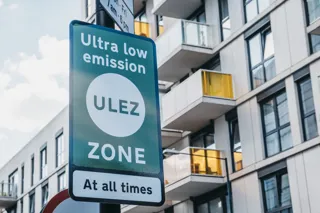The following article was published in the September 24 issue of Fleet News. Read the full article.
UK fleets are covering fewer miles in their light commercial vehicles (LCVs) according to this year’s Fleet200 survey, which uncovers a significant drop in average mileages.
The 2020 data shows that, on average, Fleet200 vans cover 20,500 miles per year. That’s an annual reduction of around 7,000 miles, compared with last year’s study, no doubt affected by the drop in business for many companies during the coronavirus lockdown, which overlapped with the data gathering for the Fleet200 survey.
However, the reduction clearly started before 2020, with fleets improving their route optimisation and efficiencies.
Currently, replacement cycles stand at an average of five years and 102,000 miles across the 102 fleets that provided data for this survey section.
Due to higher mileages in 2019, fleet operators were replacing vehicles more regularly, with an average replacement time of 58 months.
Average replacement mileage remains closely aligned to 2019’s figure, which was 103,000. It continues the downward trend in average replacement mileage, since 2017 when it peaked at 119,600. This year’s figure is closer to that of 2016, where the average replacement mileage was just above 103,000.
Replacement cycles appear to be similar when comparing smaller fleets with larger ones, but the difference between public and private sector businesses is more pronounced.
Fleet200 data shows that private sector fleets recorded an average replacement cycle of 58 months and 99,500 miles, while those in the public sector keep their vehicles longer, on average.
Public sector fleets reported a replacement cycle of 71 months, although mileages remain lower. The average private sector LCV covers 16,000 miles per year.
Their vehicles are replaced at just beyond 100,000 miles, on average, suggesting that, no matter which sector the vehicle operates in, fleets are largely unwilling to keep vehicles far beyond the six-digit mileage benchmark. Similarly, none of the fleets have replacement cycles of less than three years or more than 10.
There are exceptions to the mileage rule, of course. Of all the fleets in the Fleet200, 26 reported replacement cycles of above 100,000 miles with the highest peaking at 240,000 (36 months) at a global logistics company.
Last year, many operators outlined plans to speed up the replacement of older, more polluting vehicles ahead of the introduction of clean air zones (CAZs) and London’s Ultra-Low Emissions Zone (ULEZ).
Van registrations boomed in March 2019, ahead of the introduction of the ULEZ. More than 66,000 new vans were sold then, the highest on record.
There was another peak in June, ahead of the introduction of WLTP emissions regulations, as businesses rushed to replace vehicles. There were fears that vehicle supply might be affected due to delays in type approval testing. This affected September’s registrations, combined with uncertainty over the UK’s exit from the EU.
This year, operators face further uncertainty. Together with coronavirus-induced economic issues, there is also the Government’s ambition to end the sale of petrol and diesel cars and vans. While initially billed for 2040, the Government has since indicated that 2035 is the target, while environmental groups are pushing for 2030. That means some Fleet200 fleets face the possibility of not being able to buy petrol or diesel vehicles within their next replacement cycle.
As a result, businesses are looking for more flexible contracts that will enable them to replace diesel vans with electric ones if availability allows – or extend their current vehicles, if not.
Centrica’s vans are on a mix of cycles dependent on their use: in most instances it operates a six-year/72,000-mile replacement programme, although this is cut to five years/100,000 miles on some of its higher mileage vehicles.
In the past 12 months, it has reduced the lease length for new small vans to three years as part of a programme to electrify its fleet.
Steve Winter, head of fleet at Centrica, says: “We put them on to a three-year lease with a view to drop them back into the replacement cycle when we think there’ll be many more EVs available on the market. If there isn’t, then we have the option in the lease to extend for one or two years.
“Putting them on three-year leases has given us more confidence to go to the business to say we can start our EV programme straight away.”
Earlier this year, Centrica ordered 1,000 all-electric Vauxhall Vivaro-e vans and these will be rolled out nationwide over the next 12 months.
These will be on six-year leases but, like its internal combustion engine (ICE) fleet, Centrica will have the ability to flex the terms if the need arises, such as new technology becoming available, or lower than planned mileages.
Strong residuals help make shorter replacement cycles more affordable. At the moment, used van demand is high, caused by a shortage of new vehicles and a strong appetite for used Euro 6 models to avoid potential restrictions in cities.
 Glass’s auction data suggests the number of sales in July were up 14% versus July 2019, with first-time conversions increasing for the fourth month in a row.
Glass’s auction data suggests the number of sales in July were up 14% versus July 2019, with first-time conversions increasing for the fourth month in a row.
Andy Picton, chief commercial vehicle editor at Glass’s, says: “There is a growing appetite from trade buyers to purchase good quality stock. Sales of Euro 6 light commercial vehicles increased to just less than 50% of the overall total in July, with the number of different online buyers increasing as well.
“Supporting this enthusiasm is data confirming average prices across all ages and sectors have risen 39% versus July last year.”
It’s good news for fleets that want to switch to EVs and dispose of their existing vans sooner.
Whether the price boom remains for the rest of the year remains to be seen, however.
HGV replacement cycles
 Average HGV replacement cycles are 83 months and 286,000 miles, according to the 2020 analysis of professional fleets.
Average HGV replacement cycles are 83 months and 286,000 miles, according to the 2020 analysis of professional fleets.
The data shows a significant rise in average replacement cycles, up from 81 months and 214,000 miles in 2019.
An upward trend in average HGV replacement cycles is apparent. In 2018, HGV replacement cycles stood at 131,000 miles.
The data also shows some fleets are operating vehicles on much shorter terms than before, with one fleet keeping vehicles for just eight months. This is because truck fleet operators, especially those distributing goods on behalf of third parties, are seeking greater flexibility in times of economic unrest.
Their own customers may be offering shorter contracts than they did in the past, with no guarantee of renewal, which makes commitment to a long-term arrangements more risky. As a result, a fleet might be more inclined to sign a two-year deal than a four- or five-year one.
“If you enter into a five-year contract hire agreement, but the contract you have with your customer only covers a couple of years, then you have to work out what you are going to do with those vehicles once those two years are up,” says David Potter, managing director – contract hire and leasing at Asset Alliance Group.
Short-term agreements sound as though they might be expensive, but much depends on how the residual value of the vehicle is viewed, explains Potter. “There is an appetite in the used market at present for younger second-hand assets specified to a good standard. Buyers will pay a premium for them,” he adds.
Nailing down RVs over a longer period is proving to be more of a challenge, say some industry insiders given rising hostility towards diesels.
When looking at individual responses within the Fleet200 survey, it is clear that many fleets are seeking to introduce more electric vehicles, but are concerned about availability.



















Login to comment
Comments
No comments have been made yet.